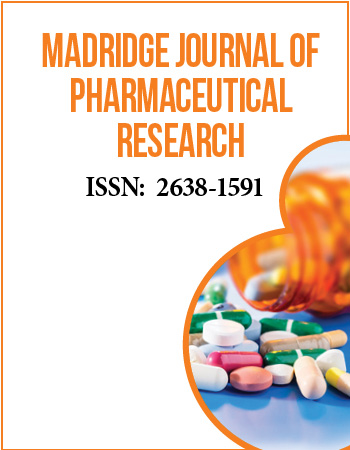International Conference on Medicinal and Pharmaceutical Chemistry
December 5-7, 2016 | Dubai, UAE
Homology modelling, structure-and ligand-based drug design of novel tubulin inhibitors and calcium channel blockers with anti-proliferative and leishmanicidal activities
School of Pharmaceutical Sciences of Ribeirão Preto, University of São Paulo, Brazil
Nowadays, the biggest challenge for the chemotherapeutic treatments and which is responsible for many cases of failures in both the cancer and the leishmaniasis treatments is called multidrug resistance (MDR). MDR is not only related to a class of medication or to a specific target, but it can also be related to the multiple factors involved in this process. The pathways that affect the decrease of drug concentration in the intracellular environment are related to the decrease associated with the inflow of the carriers, e.g. a diminution via the ABC superfamily (ATP-binding cassette) through the efflux caused by the action of P-glycoprotein (MDR1). Within the ABC superfamily, the P-glycoprotein (P-gp) is the most widely studied class and the calcium channel blockers class is the first generation of P-gp modulators. Moreover, they interfere with the adhesion of the parasite to macrophages and this could be an important strategy to control the initial phase of leishmaniasis.
In this work, we carried out the design of drug candidates addressed to be selective against tumor cells, provided with anti-proliferative and leishmanicidal properties through inhibition of tubulin, and not suffering the MDR phenomenon. We have used Ligand-Based Drug Design (LBDD), Structure-Based Drug Design (SBDD), pharmacokinetic and toxicological (ADME/Tox) predictions, as well as homology modeling of a L-type calcium channel. Resulting model was well evaluated as the top- ranked amongst three other models based on two other structures detected in a previous Blastp search. The two drug design approaches above mentioned were then used to perform virtual screening in different commercial compounds databases, totalizing 15-20 compounds selected for purchase. In silico validations of the approaches here used were initially performed using small “contaminated” (with known active ones) databases, and our drug candidates were then validated in vitro, showing interesting bioactivity.
Biography:
Carlos Tomich is Associate Professor of Medicinal Chemistry, at School of Pharmaceutical Sciences of Ribeirão Preto (Brazil). He was born in Brazil, where he did all his studies including Chemistry (State University of Campinas), Masterʼs (Military Engineering Institute), Ph.D. (University of São Paulo), two postdoctoral stages including the Barcelona Biomedical Research Park – Spain, at the Dr. Manuel Pastor´s group. In research, he works with Computational Medicinal Chemistry, with particular emphasis in cancer, Alzheimerʼs and inflammatory diseases. He has 1 patent and 137 publications (112 papers, 25 book chapters). He is also editor of 4 international books of Medicinal Chemistry.


